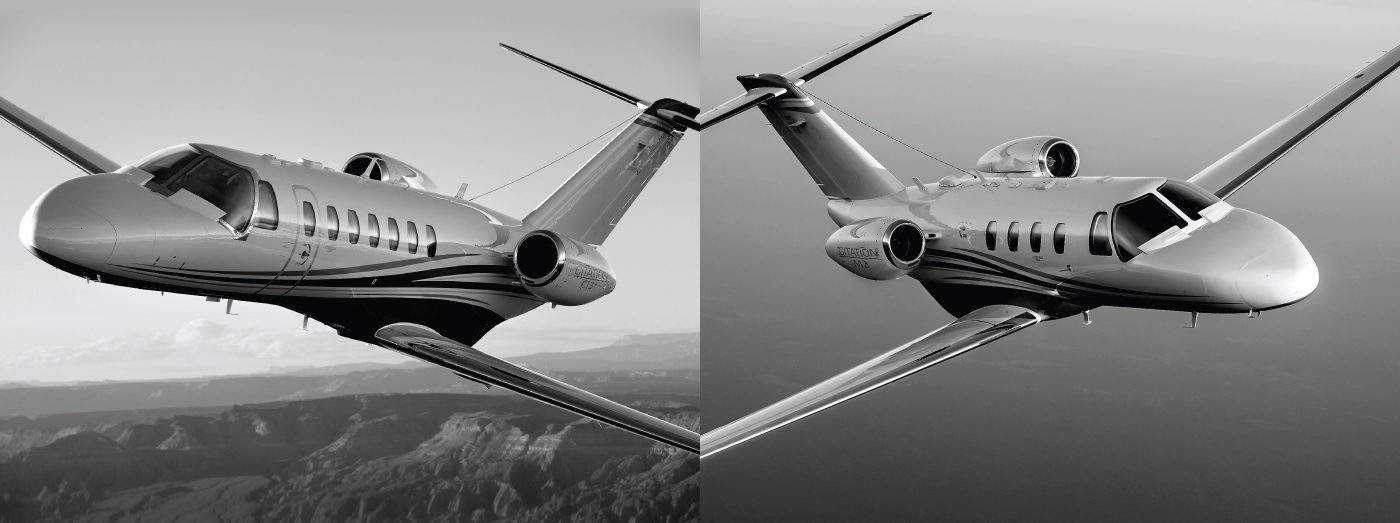Estimated reading time 12 minutes, 40 seconds.
Cruising along in the left seat of the Cessna Citation CJ3+, an odd question came to mind. I turned to demonstration pilot Ken Mullins and asked, “If you didn’t look at the logbook, could you tell whether you were currently sitting in a Citation M2 or a CJ3+?”
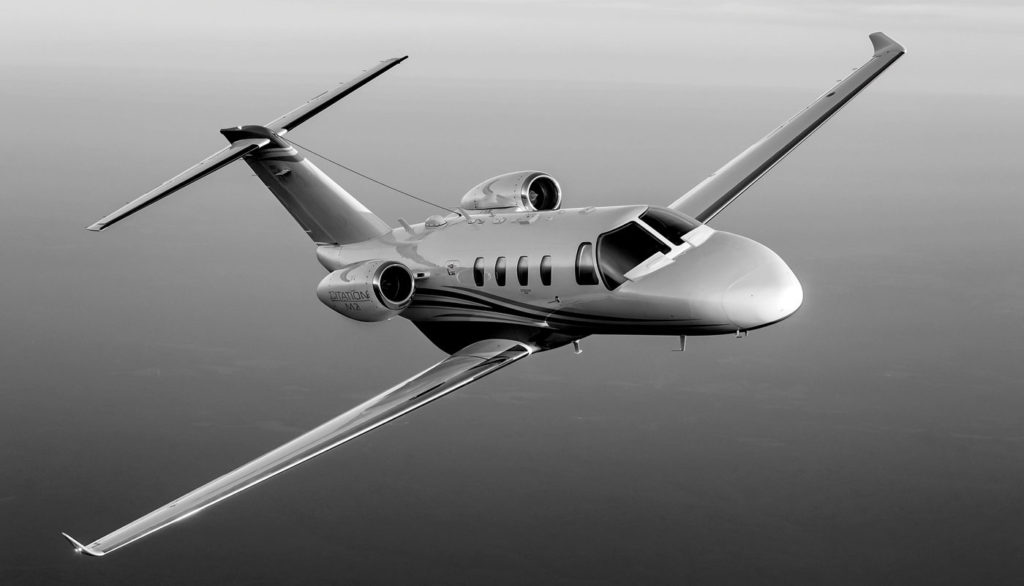
He glanced briefly around the cockpit and shrugged. “Nope,” came the reply.
Having flown the Citation M2 earlier that day, I had come to the same conclusion. Cessna invited Skies magazine to Wichita, Kan., to evaluate two of the jets from the light end of the Citation lineup: the Citation M2 and the CJ3+. I originally intended to write separate articles, but somewhere along the line I broke the rules. The story seemed to be more about the common threads of aeronautical DNA that run through the various Citation models, and how a veritable ecosystem of related designs helps Cessna match a jet to a specific customer’s needs.
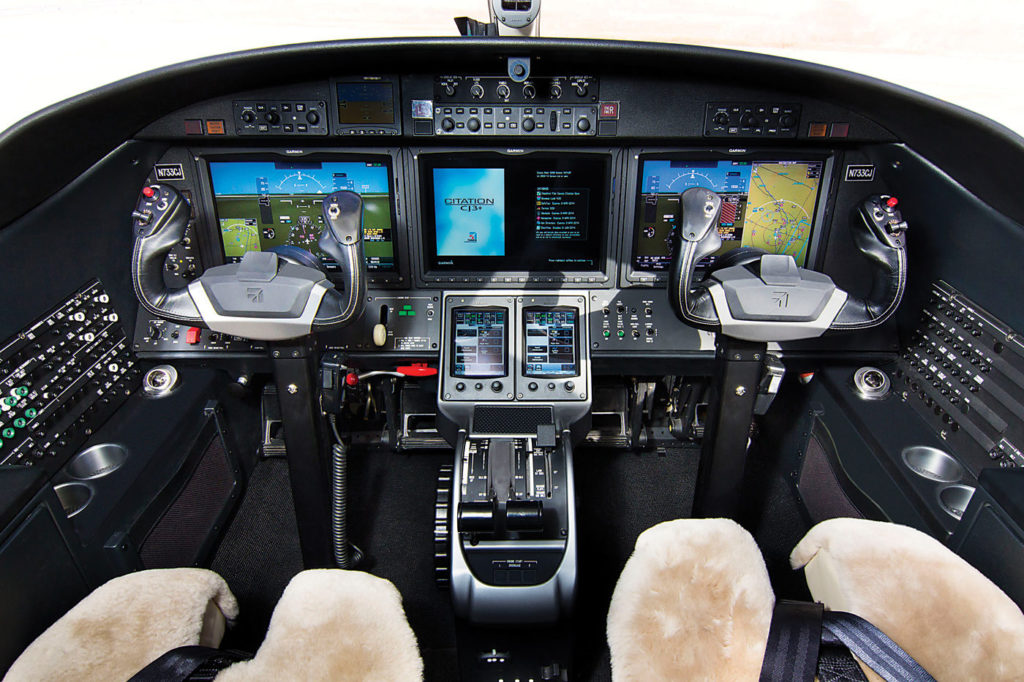
A species will rarely survive in the wild for long unless it successfully adapts to its environment. Survival of the fittest applies in biology of course, but it also seems to apply to business jets. The earliest ancestors of modern business jets first crawled onto dry land in the 1960s, and included the predecessor to Cessna’s Citation, the FanJet 500, which first flew in 1969. The evolution of the Citation has been under way ever since; a lineage that spans about 40 per cent of the duration of human powered flight.
Meet the jets
The cuddly six-seat Mustang very-light jet (VLJ) is Cessna’s entry-level jet model. The M2, certified in late 2013, is the first upgrade step from the Mustang, but shares more in common with the CJ series, conveniently also sharing a common CE-525 “CJ” single-pilot type rating.
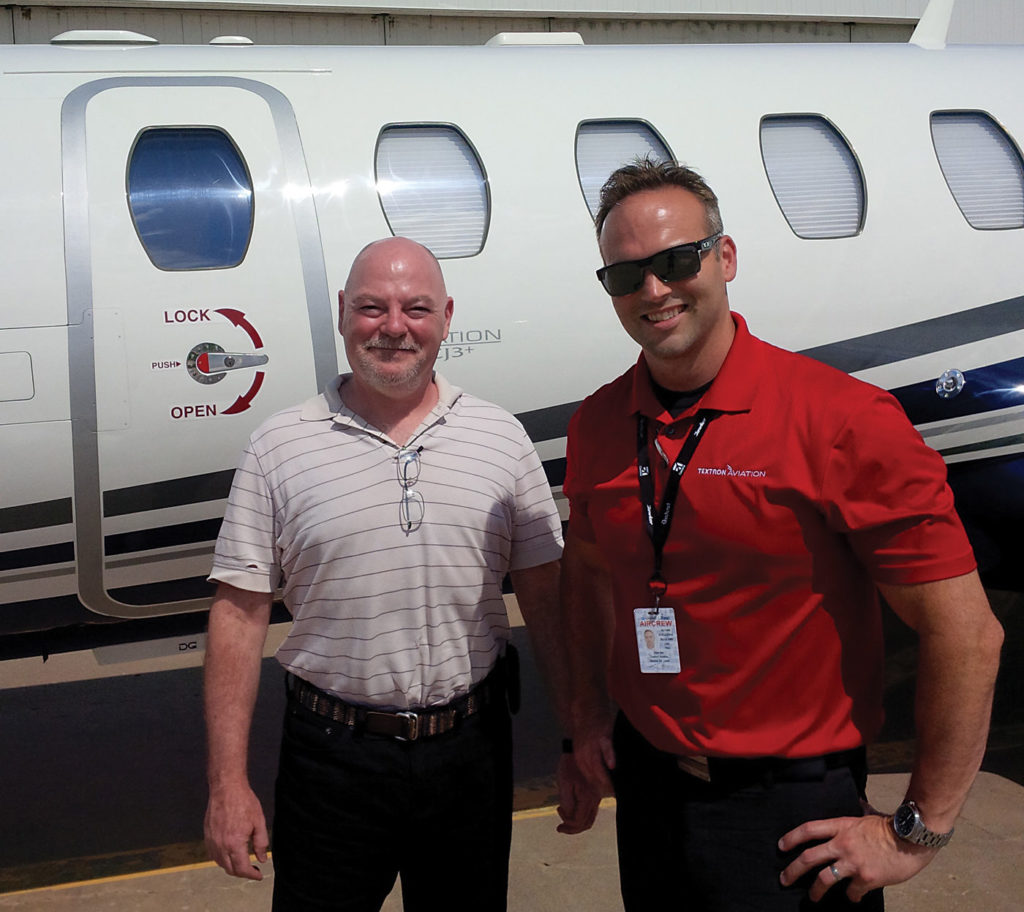
The next step up the Citation evolutionary ladder is the CJ3+, followed by the Citation CJ4 and a coterie of assorted Citations, all sharing a strong family resemblance. Each Citation species, to further tortuously strain the evolutionary metaphor, is uniquely adapted to the needs of a notional customer’s environment, offering incrementally improved range, payload and performance.
When introduced in 1993, the CJs were an all-new design, visually identifiable by their swept T-tail. They utilized the previous Citation I’s forward fuselage dimensions, and featured two Williams International FJ44 engines, an efficient natural laminar flow airfoil and trailing link undercarriage. Similarities outweigh differences, so we’ll look at the M2 and the CJ3+ aircraft together.
I flew the M2 and the CJ3+ back-to-back from Cessna’s facility at Wichita Eisenhower Airport. Our flight plan in both airplanes took us southwest of Wichita for climb and cruise performance checks and a bit of air work before returning for a coupled instrument approach.
Family resemblance
The pre-flight inspections revealed aircraft that were well-crafted, simple and solid. Both designs featured a cable-and-pushrod mechanical flight control system. Hot wing leading edges use bleed air for anti-icing, while the pneumatic boots keep the horizontal stabilizers clean. A vapour cycle air conditioner allows air conditioning on the ground from either a ground power unit or by running the right engine. Both airplanes feature over-wing fuelling.
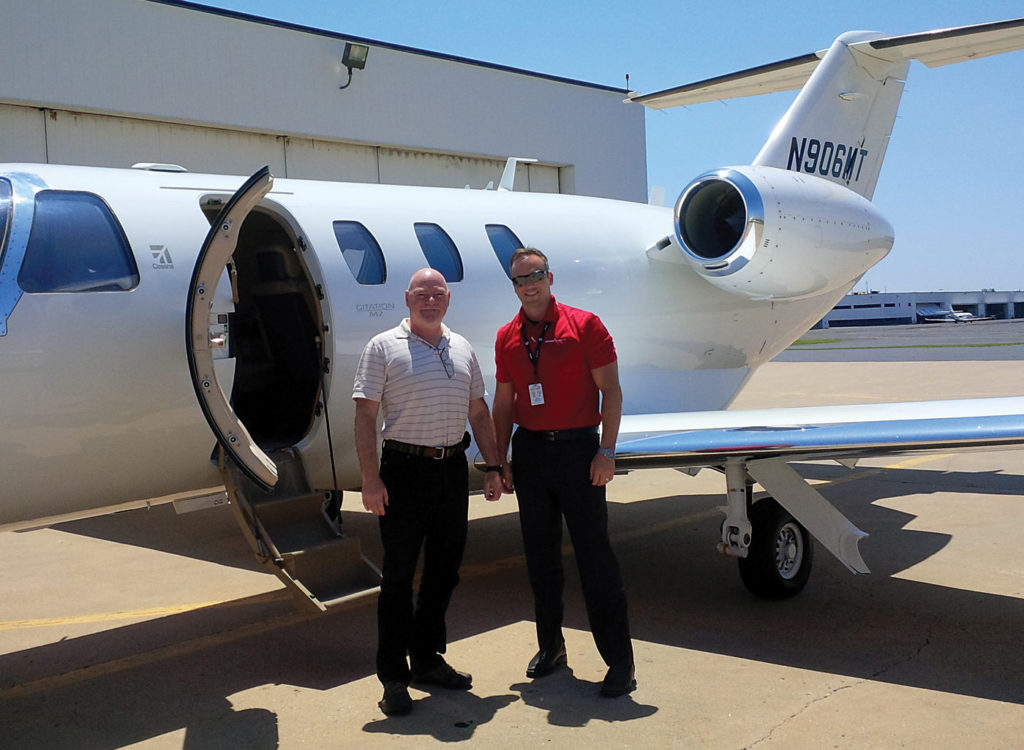
The cockpit, or rather cockpits, as they are essentially identical, are tidy and functional. The latest CJs have a short centre console that affords the pilot room to be seated without performing any inadvertent yoga postures. The seats seemed adequately adjustable for a wide range of pilot dimensions. Leather-wrapped yokes imparted a touch of class.
The M2 and CJ3+ both feature the Garmin G3000 avionics suite; a system that is quickly becoming the de facto standard for owner-flown, single-pilot IFR designs. Three bright, clear 14.1 inch displays in landscape orientation dominate the entire width of the instrument panel. It’s difficult to refer to them as simply primary and multifunction flight displays because all three screens can be customized with multiple windows, depending upon preference and phase of flight.
Two Garmin GTC 570 touchscreen controllers at the base of the centre console were a short reach away, and provide the interface for nearly every system and function on the aircraft. Garmin’s avionics booted up to the initialization screen, and we made short work of the weight and balance, field performance, flight planning and systems functional tests. The ability to download airfield weather data (METARs) via Sirius XM datalink into the performance calculations was particularly welcome. The glareshield hosted the autopilot mode control panel, knobs for the various cursors and bugs, a panel for brightness and reversionary control of the displays and an integrated standby instrument. There are no overhead switches.
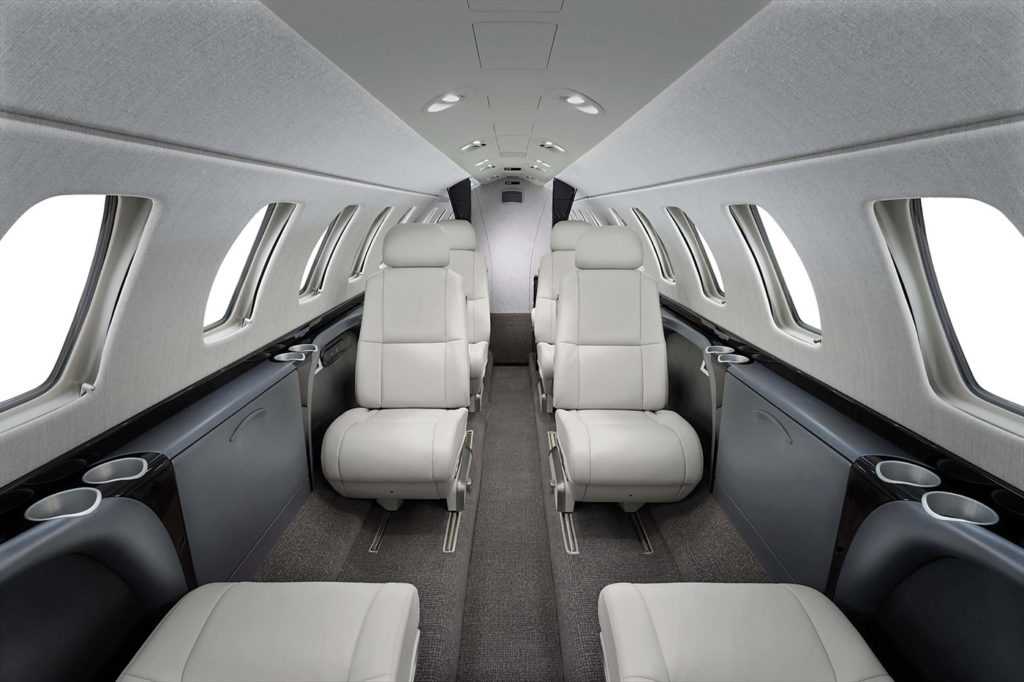
The Cessna jets have certainly embraced flight planning technology. Each jet comes with a one-year subscription to the suite of CessNav “apps” for the iPad, which conveniently perform calculations for weight and balance, runway requirements and cruise performance. The apps are simple, flexible and pleasant to use, and it was a welcome change from dragging a pencil across eye charts in the flight manual.
Despite their similarities, the CJ3+ incorporates differences owing to its certification in the Federal Aviation Administration Part 23 Commuter category. It features a pneumatic rudder bias, TCAS II traffic detection system, smoke detection in the forward and aft baggage compartments and a third pitot tube for the standby instrument.
M2: Citation sibling
For some reason, I rarely get to travel in the back of these machines, so I tried out the M2’s plush and thoughtfully designed cabin amenities before heading to the cockpit. Cessna’s tablet-based “Clairity” cabin management system is a popular option, providing wireless control of cabin lighting and temperature, moving maps and streaming media. The M2 features seating for a single pilot plus up to seven passengers, if one includes the four club seats, the belted lavatory, the copilot’s seat and the optional side-facing seat across from the main entry door.
As with most airplanes, however, the decision to fill the seats or fill the tanks involves some compromise. The empty weight of our brand new M2 demonstrator aircraft, N906MT, was 6,795 pounds. Adding two intrepid aeronauts and equipment (448 pounds) and 3,000 pounds of fuel (close to the maximum usable fuel capacity of 3,296 pounds), yielded a takeoff gross weight of 10,423 pounds. That left room for about 557 pounds of additional payload, or roughly three additional passengers.
Selecting the dispatch switch activated an auxiliary battery in the nose which powers one radio, one display and one GTC 570, allowing us to light up the avionics and initialize the flight plan prior to engine start. Full-authority digital engine control (FADEC) simplifies every phase of flight, but it makes engine starting as simple as pushing a button and advancing the respective throttle to idle.

The M2 requires a takeoff field length of 3,210 feet at maximum takeoff weight and standard sea level conditions. I selected the takeoff detent on the thrust levers and steered down the pavement until our scheduled rotation speed of 103 knots indicated airspeed (KIAS). In the M2, applying about eight to 10 pounds of force at rotation gently levitated the jet. Takeoffs were so easy that I’m at a loss to make any technical comments. My notes read, “Fun!”
I hand-flew a series of vectors and step climbs as we were shepherded out of the busy Wichita airspace, enjoying the opportunity very much. Designing owner-flown jets presents additional challenges to engineers, because in addition to the need for reliability, performance and economy, operators also expect to fall in love with their airplane. It’s not enough to design a practical jet; its handling also needs to be delightful, and if that was indeed a design objective, then the M2 meets it admirably.
The M2 can climb to its certified ceiling of FL410 (41,000 feet) at maximum takeoff weight in 24 minutes under standard conditions. Setting maximum cruise power setting will yield 404 knots true airspeed (KTAS) at FL410. I found that number reassuring. For some reason, cruising at anything less than the magic number of 400 knots seems slow in a jet. Where greater economy is a factor, in exchange for some speed the M2’s maximum published range is 1,550 nautical miles.
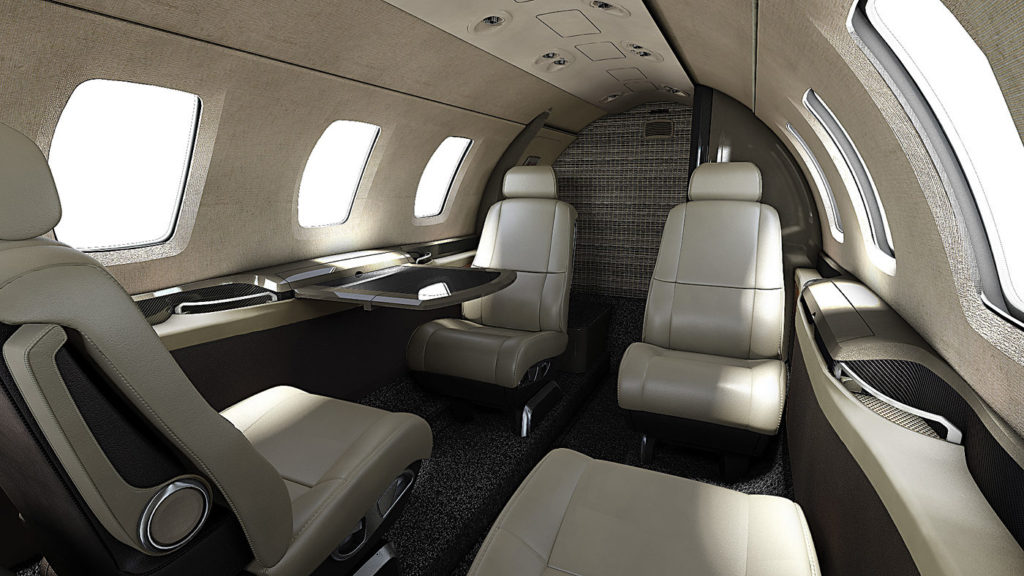
Before long we were being vectored for a coupled GPS approach to Wichita’s Runway 19-Left. Garmin’s GFC 700 autopilot did an excellent job of finding the runway. The M2 can stop in 2,590 feet at maximum landing weight, under standard sea-level conditions. The pilot has the option of manual speed brake deployment on landing or via extension of the lift dump position of the flaps.
Our brief flight in the M2 left me feeling very comfortable with its systems and features, and eager to fly something like it again. Indeed, even after my M2 flight, I didn’t yet appreciate the degree of similarity that was to come that afternoon when we flew the CJ3+.
CJ3+: Yet more jet
The CJ3+ is simply incrementally more airplane for those who want, um, more.
Over eight feet more fuselage, for example, gives room for two more seats, bringing the capacity to a single pilot plus nine passengers. Our CJ3+ demonstrator aircraft, N484CJ, had an empty weight of 8,373 pounds. The same two crew with equipment (468 pounds), but with only 3,500 pounds of fuel (out of a usable capacity of 4,710 pounds) brought it to an initial weight of 12,341 pounds. That put us a generous 1,729 pounds under the maximum ramp weight of 14,070 pounds, leaving room to fill the seats with a small residual payload for luggage.
The Citations share a strong family resemblance, and for all practical purposes I found the CJ3+ handled identically to the M2; which is to say, very nicely indeed.
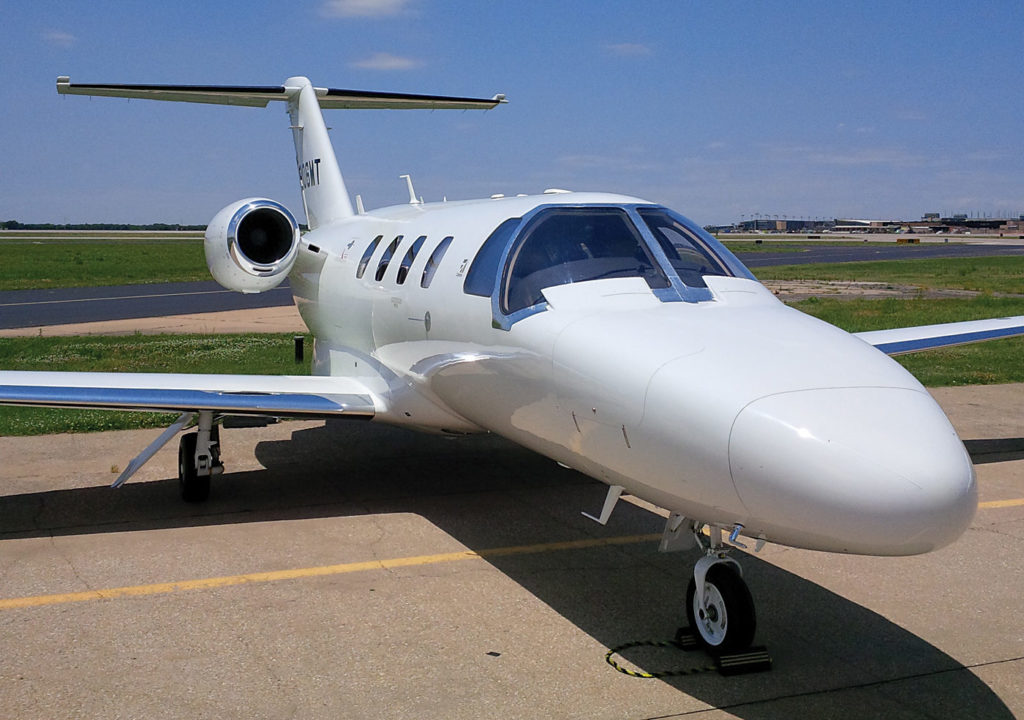
The slightly more powerful CJ3+ accelerated strongly to our scheduled rotation speed of 99 KIAS. It would need 3,180 feet of runway at maximum takeoff weight and standard sea level conditions. We captured the published climb profile of 222 KIAS to 0.56 Mach, noting 2,100 feet per minute climb rate passing 10,000 feet, later happily noting that the climb rate had only decreased to 1,200 feet per minute passing FL370.
Climbing to the CJ3+’s certified ceiling of FL450 (45,000 feet) takes 27 minutes under standard conditions at maximum takeoff weight. We set the throttles to the cruise detent and were rewarded with a zippy 419 KTAS (0.734 Mach), burning 780 pounds of fuel per hour under nearly standard atmospheric (ISA-3ºC) conditions, which was in fact a few knots faster than published. A more economical option was to reduce power to long-range cruise, which resulted in a speed of 359 KTAS (0.64 Mach), burning 635 pounds of fuel per hour, which also accorded very well with the numbers published in the flight manual. At that power setting, the CJ3+’s maximum published range is 2,040 nautical miles.
Whether it’s more seats, more range or more speed, the CJ3+ delivers various modest increments of capability, which add up to considerable operational flexibility.
Pick a jet. Pick any jet
The Cessna Citation’s long evolution has resulted in the most diverse family tree of products offered by any business aircraft manufacturer. With eight jet models available and two more under development, from the simple, friendly Citation Mustang to the globetrotting Citation Hemisphere, Cessna has a bespoke jet for every customer’s requirements.
A quick comparison of the M2 and the CJ3+ demonstrates the genius of commonality among models. Both designs share much in systems and features, but differ enough to offer customers a jet that is specifically evolved for their particular mission. That over 7,000 Citations have been delivered to date speaks to the hardiness of the species.
Robert Erdos is a contributing editor for Skies magazine. He is a graduate of the U.S. Naval Test Pilot School and a professional test pilot. Also an aviation enthusiast, his spare time activities include displaying vintage airplanes and flying his RV-6 kitplane.
